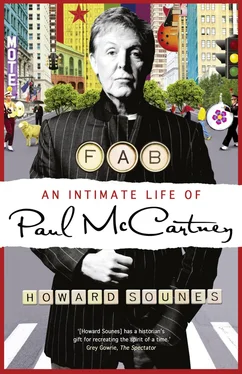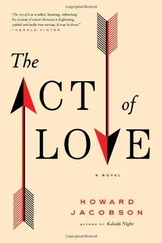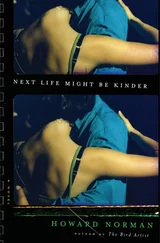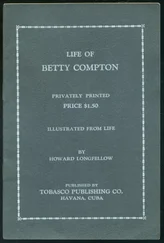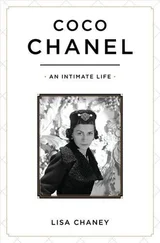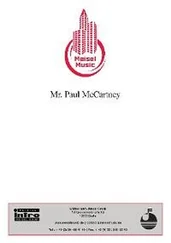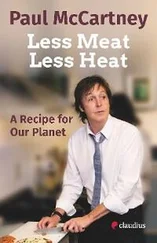Close on the heels of skiffle came the greater revelation of rock ’n’ roll. The first rumble of this powerful new music reached the UK with the 1955 movie The Blackboard Jungle , which made Bill Haley a fleeting sensation. In the flesh Haley proved a disappointment, a mature, heavy-set fellow, not a natural role model for teens, unlike the handsome young messiah of rock who followed him. Elvis Presley broke in Britain in May 1956 with the release of ‘Heartbreak Hotel’. The singer and the song electrified Paul at the age when boys become closely interested in their appearance. Elvis was his role model, as he was for boys all over the world, and Paul tried to make himself look like his hero. Paul and Ian James went to a Liverpool tailor, who took in their trousers to create rocker-style drainpipe legs; Paul grew his hair, sweeping it back like ‘El’, as they referred to the star; Paul began to neglect his school work, and spent his free time practising Elvis’s songs, as well as other rock ’n’ roll tunes that came fading in and out over the late-night airwaves from Radio Luxembourg. This far-away European station, together with glimpses of music idols on TV and in jukebox movies at the cinema, introduced Paul to the charismatic Americans who sat at Elvis’s feet in the firmament of rock: to the great black poet Chuck Berry, wild man Jerry Lee Lewis, the deceptively straight-looking Buddy Holly, crazy Little Richard and rockabilly pioneer Gene Vincent, whose insistent ‘Be-Bop-A-Lula’ was the first record Paul bought.
Paul started to take his guitar into school. Former head boy Billy Morton, a jazz fan with no time for this new music, recalls being appalled by Paul playing Eddie Cochran’s ‘Twenty-Flight Rock’ in the playground at the Inny. ‘There must have been 150 boys around him, ten deep, whilst he was singing … There he was, star material even then.’ Paul imitated his heroes with preternatural skill. But he was more than just a copyist. Almost immediately, Paul started to write his own songs. ‘He said, “I’ve written a tune,”’ recalls Ian James. ‘It was something I’d never bothered to try, and it seemed quite a feat to me. I thought, He’s written a tune! So we went up to his bedroom and he played this tune, [and] sang it.’ Created from three elementary chords (C, F and G), ‘I Lost My Little Girl’ was of the skiffle variety, with simple words about a girl who had Paul’s head ‘in a whirl’. By dint of this little tune, Paul McCartney became a singer-songwriter. Now he needed a band.
THE QUARRY MEN
The Beatles grew out of a schoolboy band founded and led by John Lennon, an older local boy, studying for his O-levels at Quarry Bank High School, someone Paul was aware of but didn’t know personally. As he says: ‘John was the local Ted’ (meaning Lennon affected the look of the aggressive Teddy Boy youth cult). ‘You saw him rather than met him.’
John Winston Lennon, named after Britain’s wartime leader, was a full year and eight months older than Paul McCartney, born on 9 October 1940. Like Paul, John was Liverpool Irish by ancestry, with a touch of showbiz in the family. His paternal Irish grandfather Jack had sung with a minstrel show. More directly, and unlike Paul, John was the product of a dysfunctional home. Dad was a happy-go-lucky merchant seaman named Freddie Lennon, a man cut from the same cloth as Paul’s Uncle Will. Mum, Julia, was a flighty young woman who dated various men when Fred was at sea, or in prison, as he was during part of the Second World War. All in all, the couple made a poor job of raising their only child, *whom Julia passed, at age five, into the more capable hands of her older, childless sister Mary, known as Mimi, and Mimi’s dairyman husband George Smith.
The relationship between John and his Aunt Mimi is reminiscent of that between David Copperfield and his guardian aunt Betsey Trotwood, an apparently severe woman who proves kindness itself when she gives the unhappy Copperfield sanctuary in her cottage. The likewise starchy but golden-hearted Mimi brought John to live with her and Uncle George in their cosy Liverpool cottage, Mendips, on Menlove Avenue, just over the hill from Paul’s house on Forthlin Road. Much has been made of the social difference between Mendips and Paul’s working-class home, as if John’s was a much grander household. As both houses are now open to the public, courtesy of the National Trust, anyone can see for themselves that Mendips is a standard, three-bedroom semi-detached property, the ‘semi’ being a type of house built by the thousands in the 1920s and ’30s, cosy suburban hutches for those who could afford to take out a small mortgage but couldn’t stretch to a detached property. The essential difference between Mendips and 20 Forthlin Road was that the Smiths owned their home while Jim McCartney rented from the Liverpool Corporation, by dint of which the McCartneys were defined as working-class. It is also fair to say that Menlove Avenue was considered to be a much more desirable place to live.
John’s childhood was upset again when Uncle George died in 1955. Thereafter John and Aunt Mimi shared Mendips with a series of male lodgers whose rent allowed Mimi to make ends meet and who, in one case, shared her bed. One way or another, this was an eccentric start in life, and John grew to be an eccentric character. Like Paul, John was clever, with a quick wit and an intense stare that was later mistaken for a sign of wisdom – he seemed to stare into your soul – whereas in fact he was just short-sighted. He also had a talent for art and a liking for language. Like many solitary children who have suffered periods of loneliness, John was bookish, more so than Paul. John’s voracious reading accounts in part for his lyrics being generally more interesting than Paul’s. The literary influence of Edward Lear and Lewis Carroll is strongly felt in John’s penchant for nonsense, for example, which first found expression in the Daily Howl , a delightful school magazine he wrote and drew for fun. The tone is typified by his famous weather forecast: ‘Tomorrow will be Muggy, followed by Tuggy, Weggy and Thurgy and Friggy’. This is also the humour of the Goon Show , which Paul and John both enjoyed. Above all else, the boys shared an interest in music. John was mad for rock ’n’ roll. Indeed many friends thought John more or less completely mad. In researching the story of Paul’s life it is remarkable that people who knew both Paul and John tend to talk about John most readily, often with laughter, for Lennon said and did endless amusing things that have stuck in their memory, whereas McCartney was always more sensible, even (whisper it) slightly dull by comparison.
Like Paul, John worshipped Elvis Presley. ‘Elvis Presley’s all very well, John,’ Aunt Mimi would lecture her nephew, ‘but I don’t want him for breakfast, dinner and tea.’ (Her other immortal words on this subject were: ‘The guitar’s all very well, John, but you’ll never make a living out of it.’) In emulation of Elvis, John played guitar enthusiastically, but badly, using banjo chords taught him by his mum, who was living round the corner in Blomfield Road, with her current boyfriend, and saw John regularly. Playing banjo chords meant using only four of the guitar’s six strings – which was slightly easier for a beginner. Having grasped the rudiments, John formed a skiffle group with his best mate at Quarry Bank High, Pete Shotton, who was assigned washboard. The band was named the Quarry Men, after their school. Another pupil, Eric Griffiths, played guitar, and Eric recruited a fourth Quarry Bank student, Rod Davis, who’d known John since they were in Sunday school together. Rod recalls: ‘He was known as that Lennon. Mothers would say, “Now stay away from that Lennon.”’ Eric found their drummer, Colin Hanton, who’d already left (a different) school to work as an upholsterer. Finally, Liverpool Institute boy Len Garry was assigned tea chest bass. Together, the lads performed covers of John’s favourite skiffle and rock ’n’ roll songs at parties and youth clubs, sometimes going weeks without playing, for one of John’s signal characteristics was laziness. Indeed, the Quarry Men may well have come to nought had they not agreed to perform at a humble summer fête.
Читать дальше
